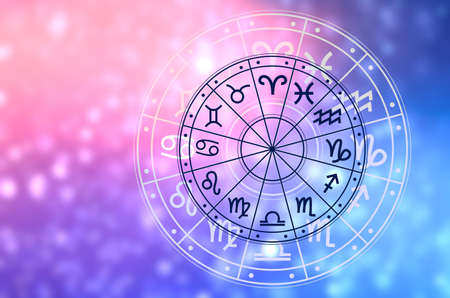Introduction: Celestial Twins in the British Imagination
Within the vaulted expanse of the night sky, the constellation Gemini has long captured the collective imagination of humankind. In Britain, where tradition and myth intermingle with rational inquiry, the fascination with the celestial twins—Castor and Pollux—finds a unique resonance. The notion of duality embodied by Gemini has woven its way through centuries of British cultural thought, emerging as a potent symbol in both literature and theatre. This introduction seeks to explore how the archetype of the twins, representing both unity and contradiction, entered the British imagination and came to shape artistic expression. From medieval chronicles to modernist verse, Gemini’s symbolic complexity provided fertile ground for writers and dramatists to probe questions of identity, ambiguity, and transformation. As we trace this motif’s historical journey into British arts, we uncover not only its astrological roots but also its profound influence on the very fabric of literary and theatrical creation.
Gemini Traits and Their Resonance in the British Literary Canon
The archetypal Gemini—marked by wit, adaptability, and an intrinsic duality—finds remarkable echoes within the British literary tradition. These qualities, emblematic of the Twins, have permeated classic works and shaped the evolution of Britain’s narrative arts. The interplay between these Gemini traits and the structure, characterisation, and thematic layering of British literature is both subtle and profound.
Wit: The Lifeblood of Satire and Social Commentary
British literature is renowned for its dry humour and biting satire—a direct reflection of Gemini’s mercurial intellect. From Shakespeare’s repartee in “Much Ado About Nothing” to Oscar Wilde’s epigrammatic brilliance in “The Importance of Being Earnest,” wit serves as both entertainment and a tool for social critique. The clever manipulation of language, often associated with the airy agility of Gemini, underpins much of Britain’s most celebrated works.
Adaptability: Shaping Genres and Voices
The capacity for adaptation is another hallmark of Gemini energy, mirrored in the British literary canon’s endless reinvention. British writers have historically demonstrated a nimble responsiveness to changing social climates, seamlessly transitioning from the grandiosity of Romantic poetry to the stark realism of Victorian novels and onwards to postmodern experimentation. This adaptability not only reflects societal shifts but also nurtures a diversity of voices, genres, and perspectives within the canon.
Duality: The Twin Nature in Character and Theme
The concept of duality—central to Gemini symbolism—permeates British literature through characters who embody contradiction or narrative structures that juxtapose opposing ideas. Consider Dr. Jekyll and Mr. Hyde or Hamlet’s internal conflict; these stories delve into the complexities of human nature, mirroring the twin aspects inherent to Gemini. Themes such as public versus private selves, tradition versus innovation, and reality versus appearance recur persistently.
Illustrative Table: Gemini Traits Reflected in British Works
| Gemini Trait | British Literary Example | Description |
|---|---|---|
| Wit | “Pride and Prejudice” by Jane Austen | Dialogue laced with irony; sharp observations on society. |
| Adaptability | “Great Expectations” by Charles Dickens | Pivotal character growth reflecting shifting social circumstances. |
| Duality | “Dr. Jekyll and Mr. Hyde” by Robert Louis Stevenson | Themes of split identity and moral ambiguity. |
This constellation of Gemini attributes has thus helped sculpt the landscape of British literature, ensuring that it remains ever-evolving yet distinctively sharp-witted and complex. Such resonance continues to inspire new generations of writers and readers alike, affirming the enduring legacy of the Twins in shaping Britain’s narrative voice.
![]()
3. Shakespeare, the Stars, and the Twin Motif
Within the pantheon of British literature, few writers have been as adept as William Shakespeare in weaving celestial symbolism and the motif of doubling into the fabric of their narratives. The Elizabethan fascination with astrology and the alignment of the stars—Gemini among them—finds its echo in the Bard’s masterful employment of twins and mirror images throughout his plays. This preoccupation is not merely incidental but reveals a deeper engagement with questions of identity, fate, and social order, themes ever-present in Gemini lore.
Shakespeare’s comedies, notably The Comedy of Errors and Twelfth Night, are renowned for their intricate plots driven by mistaken identity and twinship. In The Comedy of Errors, two sets of twins are separated at birth, setting off a cascade of confusion and hilarity that probes the boundaries between self and other—a quintessentially Geminian concern. The dualities explored serve as both dramatic device and philosophical inquiry into the mutable nature of personality and circumstance.
This motif extends beyond Shakespeare’s own pen to his contemporaries, such as John Webster and Thomas Middleton, who similarly employed doubling to interrogate issues of gender, power, and perception. The prevalence of twins on stage during this period signals a broader cultural resonance; audiences were captivated by the uncanny symmetry of twinned characters, perhaps reflecting England’s own anxieties and aspirations during a time of national transformation.
It is also notable how these literary twins often embody contradictions: they are alike yet distinct, united yet divided. Such dualism mirrors the qualities traditionally associated with Geminis—curiosity, adaptability, restlessness—and underscores how astrological archetypes subtly permeate British theatrical tradition. Thus, through the enduring figure of the twin, Shakespeare and his peers offer a uniquely British meditation on duality that continues to intrigue scholars and audiences alike.
4. Modern British Writers: Channelling Gemini Energy
Within the intricate fabric of modern British literature, the Gemini archetype manifests as a force of duality, adaptability, and restless curiosity. The mutable air sign’s influence is evident in the works of writers who navigate shifting perspectives, layered identities, and dynamic forms. From Virginia Woolf’s stream-of-consciousness narratives to Zadie Smith’s multicultural dialogues, the twin essence permeates their storytelling.
The Dualities of Woolf and Smith
Virginia Woolf, with her penchant for psychological depth and narrative innovation, embodies Gemini’s intellectual versatility. Her novels—Mrs Dalloway, To the Lighthouse, and Orlando—oscillate between inner monologue and external reality, mirroring the sign’s inherent dichotomy. Similarly, Zadie Smith channels twin-like multiplicity through her exploration of identity in contemporary Britain; White Teeth teems with hybrid characters negotiating cultural crossroads.
A Comparative Table: Gemini Traits in Modern British Authors
| Author | Key Work | Gemini Traits Manifested | Narrative Technique |
|---|---|---|---|
| Virginia Woolf | To the Lighthouse | Psyche vs. Surface, Fluid Identity | Stream-of-Consciousness, Shifting Viewpoints |
| Zadie Smith | White Teeth | Cultural Duality, Verbal Dexterity | Multiple Narrators, Polyphonic Dialogue |
| Kazuo Ishiguro* | The Remains of the Day | Memory vs. Reality, Emotional Ambiguity | Unreliable Narration, Temporal Disjunctions |
| Jeanette Winterson* | Oranges Are Not the Only Fruit | Scepticism vs. Faith, Identity Flux | Fragmented Structure, Metafictional Elements |
*Note: While not Geminis by birth, both Ishiguro and Winterson reflect Gemini energies in their narrative approach.
The Twin Influence on Literary Form and Voice
This Gemini effect is not mere thematic happenstance; it shapes the very architecture of modern British texts. Authors experiment with unreliable narrators—a hallmark of mercurial twins—while dialogues abound with wit and contradiction. British storytelling thus becomes a polyphonic theatre wherein opposing truths coexist and converse, echoing Mercury’s celestial dance between worlds.
5. Theatre of Two Minds: Gemini Influence on British Stagecraft
Within the storied tradition of British theatre, the influence of Gemini’s duality is both subtle and profound, weaving itself into the very fabric of stagecraft. The theatrical landscape of Britain is marked by an enduring fascination with contrasts—characters torn between duty and desire, plots pivoting upon sudden reversals, and dialogues crafted to reveal inner conflict. This dual-natured approach can be traced to the archetypal energy of Gemini: the sign of twins, whose essence embodies multiplicity and mercurial wit.
The Dualities at Play
British playwrights from Shakespeare to Stoppard have long revelled in the art of juxtaposition. Consider the comedic tragedy and tragic comedy that pervade works such as Hamlet or Rosencrantz and Guildenstern Are Dead. Here, Gemini’s penchant for polarity emerges through characters who are both observers and participants, victims and agents. This oscillation between extremes allows for a depth of characterisation and narrative complexity that is distinctly British, challenging audiences to embrace ambiguity rather than certainty.
Conflict as Creative Catalyst
Theatre in Britain often thrives on the tension between seemingly irreconcilable forces: tradition versus innovation, public persona versus private self, the comic interlaced with the tragic. Such dialectics mirror the internal dialogues inherent to Geminian influence. The stage thus becomes a crucible where ideas are tested through conflict—reflecting not only society’s divisions but also the inner schisms each individual must navigate.
Reversals and Revelations
No less significant is the British fondness for reversals—moments when expectations are subverted and new truths emerge. In plays ranging from Wilde’s biting satires to Pinter’s enigmatic dramas, reversals serve as dramatic fulcrums. These shifts evoke Gemini’s mutable air: ever-changing, elusive, yet intellectually stimulating. Through such devices, British theatre invites its audience into a space of perpetual discovery, echoing the restless curiosity of the twin archetype.
In sum, the impact of Gemini-like dualities on British stagecraft is evident in its embrace of contrast, conflict, and reversal. This tradition does not merely entertain; it provokes thought and mirrors the complexities of both self and society, reaffirming the enduring resonance of Geminian influence within Britain’s theatrical imagination.
6. Cultural Legacy: Astrology and Artistic Identity in Britain
Reflecting upon the broader cultural relationship between astrological identities and British artistic expression reveals a uniquely nuanced interplay that extends far beyond mere superstition or entertainment. Throughout history, Britons have exhibited a particular fascination with the stars and their supposed influence on personal destiny—a curiosity reflected vividly in both literature and theatre. The Gemini archetype, representing duality, adaptability, and intellectual curiosity, has woven itself into the very fabric of British artistic identity, subtly guiding the creation and interpretation of countless works.
The enduring presence of astrology in British culture is not simply a relic of bygone eras; rather, it serves as an undercurrent that continues to inspire contemporary artists, playwrights, and novelists. In many ways, astrological motifs—especially those associated with Gemini—provide a framework for exploring complex characters and intricate narratives. This is particularly evident in the works of Shakespeare and his successors, where themes of twinship, mirroring, and contradiction are not only plot devices but also reflections of a deeper cosmic order.
Moreover, the British inclination towards wit, irony, and layered meaning harmonises elegantly with Gemini’s mercurial spirit. Whether consciously adopted or subconsciously embedded within the national psyche, these qualities infuse British artistic output with a distinctive charm. Public engagement with astrology, from Elizabethan pamphlets to modern horoscopes in broadsheets, reinforces this collective awareness and sustains an ongoing dialogue between celestial symbolism and creative endeavour.
It is also essential to recognise how astrology offers both artists and audiences a means of grappling with questions of identity and fate. For many British writers and performers, invoking Gemini traits allows for the portrayal of multifaceted personalities—characters who embody contradiction yet remain profoundly relatable. In theatre especially, this astrological archetype encourages experimentation with dual roles and shifting perspectives, enriching the dramatic experience for all involved.
In sum, astrology—and Gemini in particular—serves not merely as ornamentation but as a significant wellspring for British artistic expression. Its legacy persists in the subtle echoes found throughout literature and theatre: a testament to Britain’s enduring quest to understand itself through stories written not just on parchment but among the stars.


